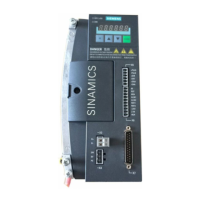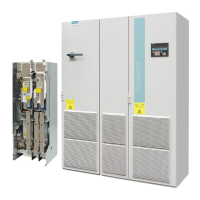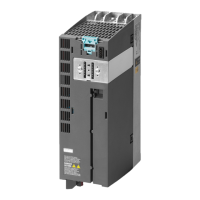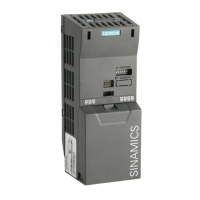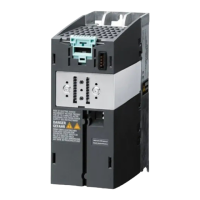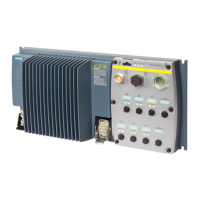Cabinet design and EMC
12.7 Protective connection and equipotential bonding
SINAMICS S120 Combi
Manual, 11/2017, 6SL3097-4AV00-0BP7
293
Protective connection and equipotential bonding
Protective connections
The S120 Combi is designed for use in control cabinets with a protective conductor
connection.
The protective conductor connection of the S120 Combi must be connected to the protective
conductor connection of the control cabinet as follows:
Table 12- 14 Cross-section for copper protective conductors
Protective connection in mm
2
copper
2
The same as the line supply cable
From 16 mm
2
to 35 mm
2
16 mm
2
2
For materials other than copper, the cross-section should be increased so that as a
minimum, the same conductivity is attained.
All plant and machine parts must be incorporated in the protective concept.
The protective ground connection of the motors used must be established through the motor
cable. For EMC reasons, these protective ground connections should be connected at the
S120 Combi.
Installation regulations in the area of validity of IEC/EN
IEC 61800-5-1, Section 4.3.5.4, Table 5 (see also IEC 60364-5-54 Table 54.2) is the basic
regulation, according to which the protective conductor must have the same minimum cross-
section up to a line conductor cross-section of 16 mm.
Alternatively, the protective conductor can be dimensioned according to IEC 60364-5-54,
Section 543.1.2. Taking the I
2
t values of the specified protective equipment into account, the
minimum conductor cross-section must be 6 mm
2
(copper).
Installation regulation in the area of validity of UL/CSA (NEC for USA / CEC for Canada)
The respective National Electrical Code applies in the USA and Canada. The minimum
cross-section of the protective conductor should be dimensioned according to the rated
current of the corresponding protective device. Taking the specified protective device up to
60 A into account, the minimum conductor cross-section for the protective conductor must be
AWG 10 or 6 mm
2
(copper).
A mounting plate serves simultaneously as an equipotential bonding surface. This means
that no additional equipotential bonding is required within the drive line-up. The mounting
plate must be connected to the protective conductor connection of the control cabinet
through a low impedance.
If a common metallic bright mounting plate is not available, equally good equipotential
bonding must be ensured using the cable cross-sections listed in the table above or with at
least the same conductivity.
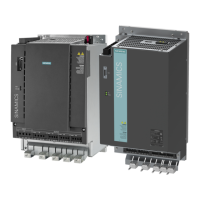
